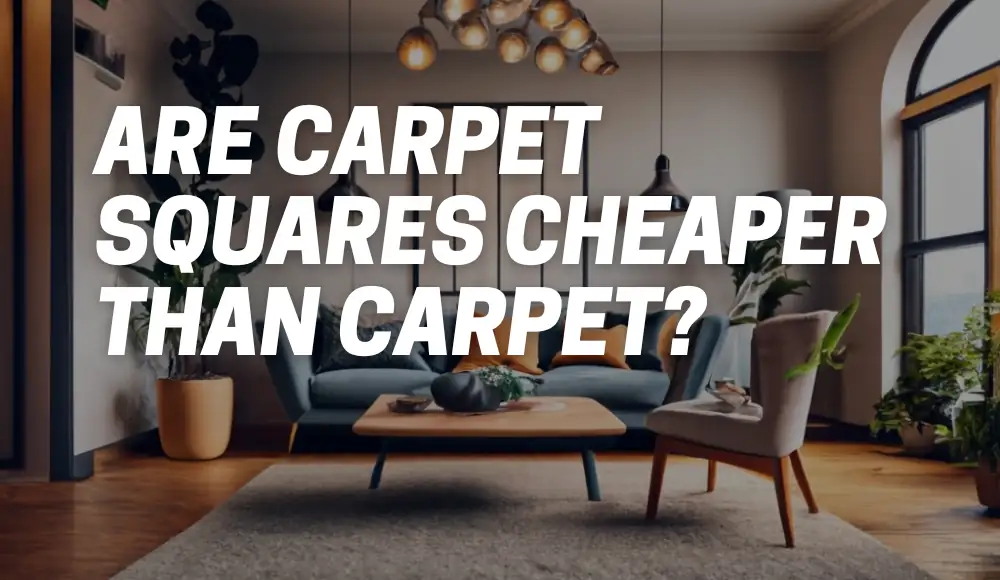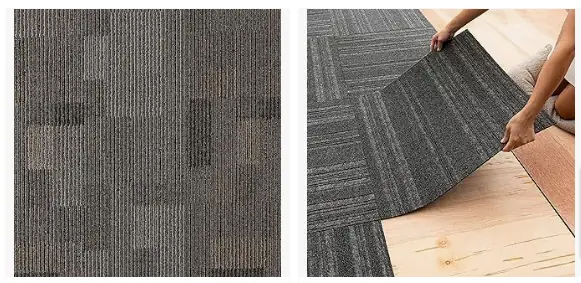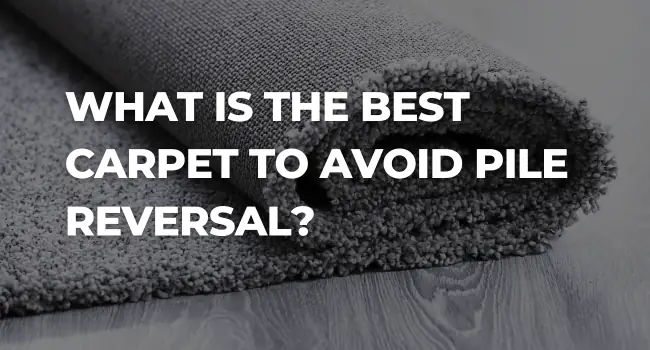Last updated on October 28th, 2023 at 12:40 pm
When it comes to flooring, one question that frequently arises is, “Are carpet squares cheaper than traditional carpet rolls?” This inquiry is not just about the upfront costs; it encompasses long-term considerations, durability, installation methods, and design choices. In this comprehensive guide, we’ll break down the cost comparison between carpet squares and traditional carpet rolls, shedding light on what you need to know before making a decision.
What Are Carpet Squares?
Let’s start with the basics. Carpet squares, also known as carpet tiles, are a versatile flooring option that comes in smaller, square sections. They differ from traditional carpet rolls, which are large, continuous pieces of carpeting. Carpet squares have gained popularity due to their ease of installation and design flexibility.
Carpet squares are usually 18×18 inches (45×45 cm), but there are various sizes available. They are made of materials like nylon, polyester, or polypropylene, and they come in a wide range of colors, patterns, and textures.
Advantages and Disadvantages of Carpet Squares
Advantages
- Cost-Effective: Carpet squares are often more budget-friendly than traditional carpet rolls. This is because you can buy only the exact quantity you need, minimizing waste.
- Easy Installation: Installing carpet squares is a DIY-friendly process, saving on installation costs. Even if you opt for professional installation, the labor time is typically shorter.
- Repairs Are a Breeze: If a section of carpet squares gets stained or damaged, you can easily replace just the affected tiles, while with traditional carpet, you might need to replace the entire carpet.
- Design Flexibility: Mixing and matching different styles and colors of carpet squares allows for creative and customizable flooring designs.
And what are the disadvantages of carpet tiles?
- Seams are Visible: Since carpet squares are installed as individual tiles, seams can be visible, which may affect the overall aesthetics.
- Not Ideal for High-Traffic Areas: In some high-traffic areas, the seams of carpet squares can wear down more quickly than traditional carpet.
- Limited Material Options: Carpet squares are often made from synthetic materials, which might not be as luxurious as some natural fiber carpet options.
How to Install Carpet Tiles
Installing carpet squares is a relatively straightforward process. Here’s a general guide:
- Prepare the Subfloor: Ensure the subfloor is clean, dry, and level. If needed, use a self-leveling compound.
- Lay Out the Design: Plan your layout by starting from the center of the room and working your way out. Consider using adhesive or peel-and-stick backing, depending on the type of carpet squares you choose.
- Cut Tiles to Fit: Measure and cut tiles as necessary to fit along the walls and in corners. You may need a utility knife and a straightedge.
- Apply the Tiles: Peel off the backing and press the carpet squares firmly onto the subfloor.
- Finishing Touches: Install baseboards or transition strips to complete the look.
—
For a larger room or complex designs, professional installation might be more suitable. The cost of professional installation varies based on factors like location and the complexity of the project.
How Long Do Carpet Squares Last?
The lifespan of carpet squares depends on factors such as material quality, maintenance, and the level of foot traffic in the area. On average, carpet squares can last 5-15 years. Regular cleaning and maintenance, including vacuuming and occasional deep cleaning, can extend their longevity.
Broadloom vs. Carpet Tile
Broadloom carpets, traditional rolled carpets, and carpet tiles have distinct characteristics:
- Broadloom Carpet:
- Continuous roll, typically 12 feet wide.
- Fewer seams and a more seamless look.
- Higher initial cost and installation expenses.
- Challenging to replace sections if damaged.
- Carpet Tiles:
- Smaller, square sections.
- Easier and more cost-effective installation.
- Simple to replace individual tiles.
- Design flexibility with the ability to mix and match.
Popular Brands and Styles of Carpet Squares
Carpet squares are offered by various brands, each with its own unique styles, materials, and pricing. Some well-known carpet square brands include:
- FLOR: Known for their stylish and eco-friendly options.
- Interface: Offers a wide range of patterns and textures.
- Shaw: A reputable brand with a variety of styles and materials.
The pricing of carpet squares can vary significantly between brands and styles, so it’s essential to explore your options and find the one that fits both your budget and design preferences.
Comparing Long-Term Costs
When determining whether carpet squares are cheaper than traditional carpet rolls, it’s crucial to consider the long-term costs. This includes factors like maintenance, durability, and replacement expenses. While carpet squares may have a lower initial cost, they may require more frequent replacement in high-traffic areas due to wear and visible seams. Traditional carpet rolls may be more durable in such cases, potentially reducing long-term costs.
Can You Mix Carpet Squares with Traditional Carpet?
Yes, you can mix carpet squares with traditional carpet, and this can be an excellent design choice. For instance, you can use carpet squares to create an attractive rug or add design elements within a room. This allows you to combine the cost-effective benefits of carpet squares with the seamless look of traditional carpet.
DIY vs. Professional Installation Costs
The cost of installing carpet squares can vary significantly based on whether you opt for DIY installation or hire a professional. DIY installation typically saves on labor costs but requires more time and effort on your part. Professional installation ensures a smoother and quicker process but comes with additional expenses.
Professional installation costs can range from $1 to $3 per square foot, depending on the location and complexity of the job. It’s essential to obtain multiple quotes and consider the trade-off between cost and convenience.
Carpet Square Cost Calculator
To help you estimate the cost of carpet squares for your specific project, here’s a simple formula to follow:
Total Cost = (Price per Square Foot) x (Number of Square Feet)
Don’t forget to account for any additional costs, such as adhesives, underlayment, or professional installation fees or tips, if applicable.
Where to Buy Affordable Carpet Squares
If you’re on a budget, finding affordable carpet squares is crucial. Here are some places to explore:
- Local Retailers: Visit local flooring stores or home improvement centers to see their selection and take advantage of in-person discounts.
- Online Retailers: Online marketplaces, such as Amazon, and retailers often offer a wide variety of carpet squares at competitive prices.
- Discount Outlets: Discount outlets may have overstock or clearance items, providing you with an opportunity to find discounted carpet squares.
Remember to compare prices and quality to ensure you’re getting the best deal for your specific needs.
Customer Reviews and Testimonials
When deciding between carpet squares and traditional carpet, it’s valuable to hear from those who have already made the choice. Customer reviews and testimonials can provide insight into real-world experiences, helping you make an informed decision. Seek out online reviews and ask for recommendations from friends and family who have used carpet squares in their homes.
| Aspect | Pros | Cons |
|---|---|---|
| Ease of Cleaning | – Easy to vacuum | – Corners can get caught in vacuum suction |
| Durability | – Durable and stain-resistant | – May not be as soft as traditional carpet |
| Modular | – Easy to replace individual tiles | – May not have the plush feeling of traditional carpet |
| Cost-Effective | – Cost-effective for areas like basements | – May look cheap in some settings |
| Design Options | – Can resemble traditional carpet with the right material | – May look like an office carpet in some cases |
| Installation | – Quick and easy to install | – May not be as comfortable as hardwood or area rugs |
| Water Resistance | – Some types have a rubber back to contain spills | – Not as soft as traditional carpet |
| Longevity | – Can last if well-maintained | – May not be as soft as traditional carpet |
| Versatility | – Can be used in areas prone to flooding | – May not be as aesthetically pleasing as other flooring options |
Trends in Flooring: Carpet Squares vs. Traditional Carpet
As consumer preferences evolve, flooring trends also change. In recent years, carpet squares have gained popularity due to their affordability, ease of installation, and design versatility. However, traditional carpet remains a classic choice for a seamless, luxurious look. Staying informed about these trends can help you make a choice that aligns with both your personal style and practical needs.
In conclusion, the choice between carpet squares and traditional carpet involves various factors, including initial cost, long-term expenses, design preferences, and maintenance considerations. While carpet squares often offer cost-effective benefits, they may not be the ideal choice for every situation. Consider your specific needs and budget, and don’t hesitate to explore different options before making a decision.
Now, let’s take a closer look at the cost comparison between carpet squares and traditional carpet rolls with the following table:
| Aspect | Carpet Squares | Traditional Carpet |
|---|---|---|
| Initial Cost | Affordable | Varies widely |
| Installation | DIY-friendly | Often requires a pro |
| Durability | May need frequent replacement in high-traffic areas | More durable in high-traffic areas |
| Maintenance | Easy to replace individual tiles | May require full carpet replacement |
| Design Flexibility | Mix and match styles and colors | Limited to a single style |
| Lifespan | 5-15 years, depending on material and maintenance | Longer lifespan in some cases |
| Overall Cost | Lower upfront cost, potential higher long-term costs | Higher upfront cost, potential lower long-term costs |
Remember, your choice should align with your unique requirements and preferences. To further explore this topic, consult authoritative sources such as the Carpet and Rug Institute and the Flooring Association. Their expertise can provide you with additional insights into the world of carpeting.




